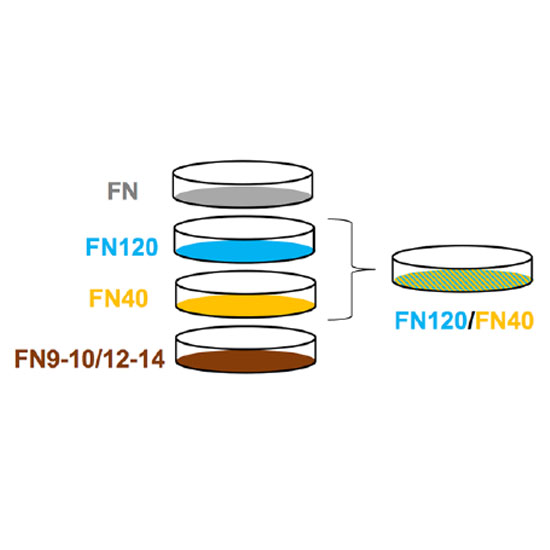Fibronectin promotes directional persistence in fibroblast migration through interactions with both its cell-binding and heparin-binding domains
16-Jun-2017
Scientific Reports, volume 7, Article number: 3711 (2017), https://doi.org/10.1038/s41598-017-03701-0
Scientific Reports, online article
The precise mechanisms through which insoluble, cell-adhesive ligands induce and regulate directional cell migration remain obscure. We recently demonstrated that elevated surface density of physically adsorbed plasma fibronectin (FN) promotes high directional persistence in fibroblast migration. While cell-FN association through integrins α5β1 and αvβ3 was necessary, substrates that selectively engaged these integrins did not support the phenotype. We here show that high directional persistence necessitates a combination of the cell-binding and C-terminal heparin-binding domains of FN, but does not require the engagement of syndecan-4 or integrin α4β1. FN treatment with various fixation agents indicated that associated changes in fibroblast motility were due to biochemical changes, rather than alterations in its physical state. The nature of the coating determined the ability of fibroblasts to assemble endogenous or exogenous FN, while FN fibrillogenesis played a minor, but significant, role in regulating directionality. Interestingly, knockdown of cellular FN abolished cell motility altogether, demonstrating a requirement for intracellular processes in enabling fibroblast migration on FN. Lastly, kinase inhibition experiments revealed that regulation of cell speed and directional persistence are decoupled. Hence, we have identified factors that render full-length FN a promoter of directional migration and discuss the possible, relevant mechanisms.











